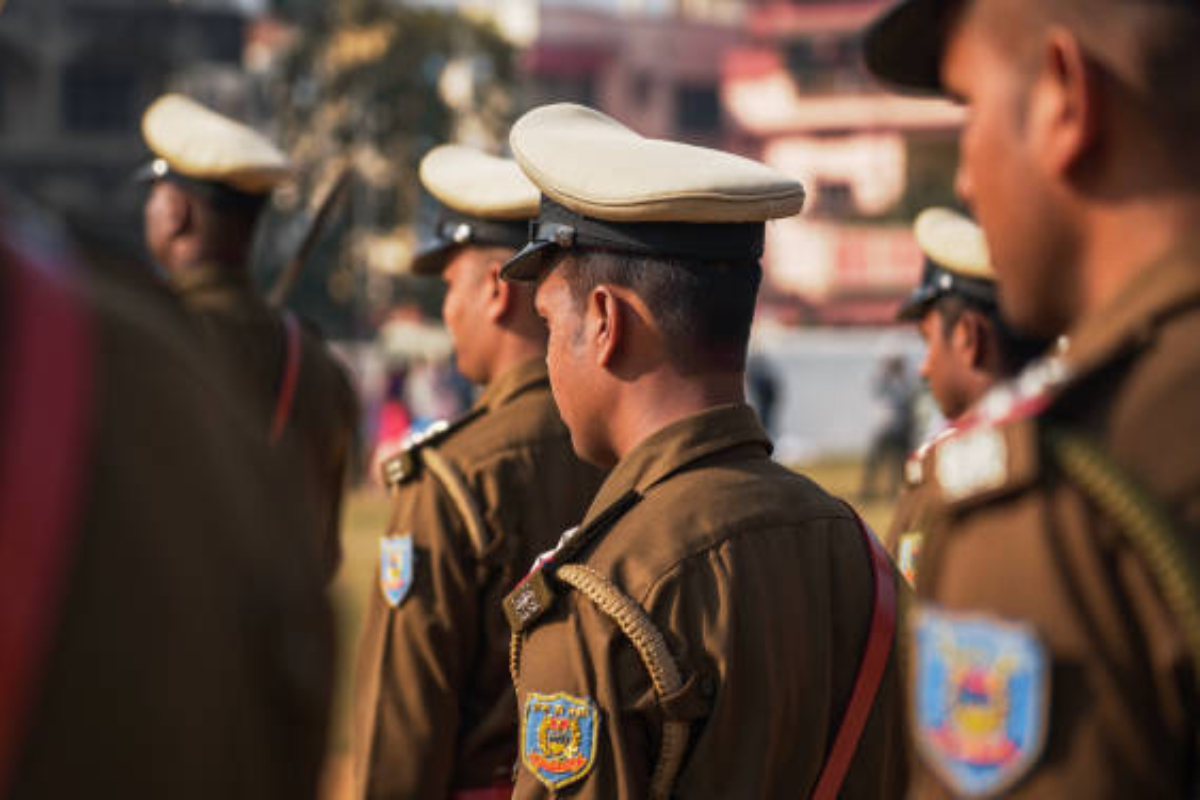UP govt announces new dates for police recruitment exam
Lakhs of youths preparing for the police recruitment examination can now breathe a sigh of relief as the Uttar Pradesh government has announced new dates for the previously canceled exam.
Experts say the advancements have been made at the grassroots level with the integration of police stations and the network of police through digitalization

[Representational Photo : iStock]
Policing in India has witnessed multi-dimensional advancements during the past decade, especially in terms of becoming more hi-tech, more accessible to people with the incorporation of technology and much-reduced response time, and many other improvements such as stepping up security.
Experts say the advancements have been made at the grassroots level with the integration of police stations and the network of police through digitalization with the evolvement of Crime and Criminals Tracking Network and Systems (CCTNS) that have proven a game changer in the overall functioning of law and order agency.
According to the data published by the government, the various benefits of CCTNS are now available to each of the state police forces with the launch of a digital police portal by the government of India in August 2017 that empowers police officers with a facility that helps in the investigation, policymaking, data analytics, and research through a national database of crime record.
Advertisement
According to a senior police official, earlier, simple recordkeeping and maintenance of records and their processing alone engaged a lot of manpower across the police system. However, the computerization and use of software not only saved a lot of time but also reduced the use of manpower which could be put to use in more crucial assignments.
Now, the police have better access to records and overall data across various departments and states, which helps in not only solving cases but also understanding, and breaking patterns of criminals which has helped in crime prevention.
Police officials say detection of crime through software tools, technical assistance, and predictive nanalysis of patterns of crime various such tools have become better than before, and help in prevention as well as taking measures against criminal elements.
With the police documentation processes becoming paperless to a great extent with the use of upgraded technology during the past decade, record keeping has become very efficient It has helped the complainants in a big way as they can now make use of soft copies, and store them in a better way than before.
Another very important aspect of the transformation in policing is the inclusion of an advanced network and the use of CCTV over a couple of years that has helped police personnel a lot in every dimension, be it prevention of crime, solving cases, surveillance, and vigilance.
The use of CCTVs has also come as a deterrent to criminal activities. Unlike in the past now antisocial elements think twice before executing a crime, or even if they do, they are unable to evade the law as easily as they could earlier. It has to an extent helped reduce the blind spots in an area, especially those that are sensitive and prone to criminal activities.
The police are now equipped with drones and other advanced equipment such as tablets and other devices mounted in their patrolling vehicles and PCRs that keep them connected enhancing communication through the internet.
According to a senior officer with the SSB, one of the Central Armed Police Force (CAPF), internal communication of the police has witnessed a major improvement during the past decade in terms of ease, speed, and effectiveness. Now, the overall internal communication has become faster, safer effective, and barrier-free, which adds to the efficiency of police personnel in policing. There are so many things that are to be communicated, like circulars, orders and information, which have become better than before now with the technological advancements.
Police units these days have their own apps which help their personnel in many ways such as accessing services and important information as part of the force. Similarly, national communication standards were released by the Union home minister during the Heads of PPDR Conference in 2020, as some states had well-developed police communication, while others were lagging behind in this respect.
Therefore, the Ministry of Home Affairs (MoHA) felt the need for the formulation of national standards for the communication needs of the state police departments, including wireless communication, and bringing uniformity in the adoption of state-of-the-art technology available by all states and Union Territories (UTs).
Meanwhile, initiatives such as the Himmat App, a mobile-based application launched by the Delhi Police, especially for the safety of women, are something that can be used by anyone in an emergency. Women can use its features to alert the Delhi Police in case of any threat or risk situations.
The app was launched by then-home minister Rajnath Singh back in 2015, and now its upgraded version is also available on the Delhi Police Website and Android mobile phones.
Under the scheme of Modernisation of Police Force (MPF), states have been provided Central assistance for acquiring advanced weaponry such as AK-47 and INSAS Rifles, police equipment such as CCTV surveillance systems, modern communication equipment, and state-of-the-art equipment for state intelligence branches and state forensic science laboratories, a report said.
The CAPFs, especially those guarding borders have advanced equipment that helps prevent trans-border crimes such as infrared cameras, long-range surveillance equipment, etc.
Even traffic cops have been provided with advanced mobile apps for checking and executing laws and inspecting vehicles. These apps are connected to the centralized database and help them identify vehicles’ status of registration pollution insurance and other aspects.
Body cameras have also been made more common among police personnel so that they can keep a record of prosecutions and also nothing could go off the record.
Advertisement